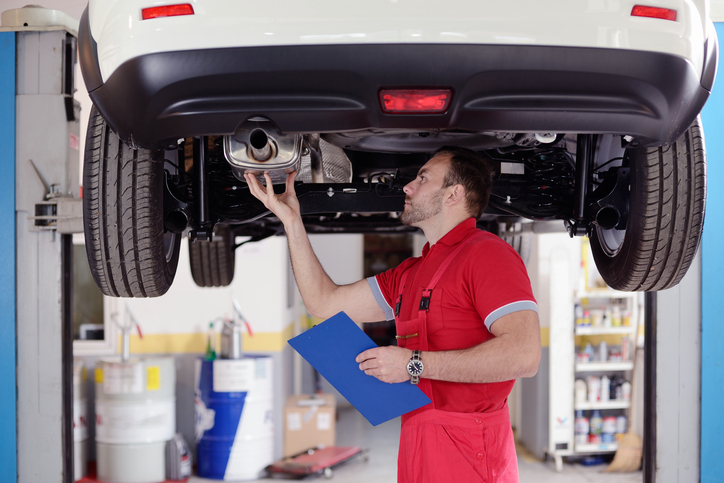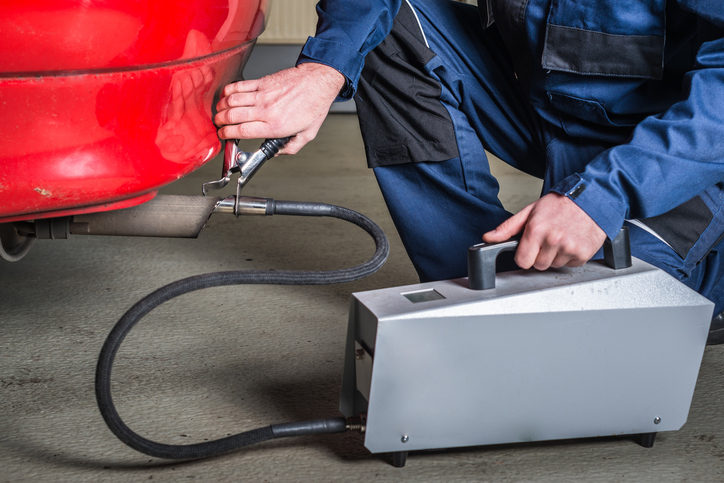Considering Careers in the Auto Industry? Here’s a Day in the Life of an Emissions Specialist

It’s no secret that vehicles emit exhaust which can be harmful to the environment. Of all vehicles in Quebec that are between 11 to 25 years old, 22 per cent give off harmful emissions like hydrocarbons, carbon monoxide, and NOx.
Emissions specialists and technicians play an important role in ensuring vehicles aren’t emitting excessive toxins. In addition, they also make sure all automotive parts involved in the emissions process are functioning properly and efficiently.
Want to learn more about what emissions specialists do? Read on to discover typical activities an emissions professional may do in a day.
Automotive Maintenance Technicians Who Become Emissions Specialists Perform Tests
As an automotive maintenance technician emissions specialist you will likely start your day arriving at work, grabbing a cup of coffee, and getting set up. This could include assembling your tools or the diagnostic equipment you will need and checking in with your manager. Once the first client comes into the shop, it’s time to get started conducting emissions testing.
Although the exact method varies, a common way to conduct emissions testing is to use a dynamometer. A dynamometer simulates road driving conditions on the engine or powertrain, allowing you to test its efficiency. While the test is running you will carefully monitor the intake and exhaust. You will then record the information revealed by the dynamometer for analysis.
Aside from using a dynamometer, some tests are conducted using an On Board Diagnostic System (OBD) test which analyzes the vehicle’s computer, which monitors the emissions system. In addition to OBD, a tailpipe test can also be used to measure the emissions quality. Specifically, a tailpipe test measures carbon monoxide and hydrocarbon outputs.

Emissions Specialists Compare Results With Standards
After the test is conducted, you will then analyze the results against the vehicle manufacturer’s standards. If the vehicle is underperforming you may be required to perform diagnostic work to figure out what’s going wrong. Depending on the shop you are working at, you may advise your client on the status of their vehicle and what needs to be done to get it in working order.

Automotive Maintenance Technicians Who Become Emissions Specialists Make Repairs
With certain positions or careers in the auto industry, you may perform the repairs yourself after you diagnose the problem. Some common problems you may encounter that can cause emissions issues are ignition misfire, lean misfire, and faulty oxygen sensors. Most of these issues are common in aging vehicles due to normal daily wear and tear. For example, ignition misfire is commonly caused by worn spark plugs or a weak coil.
One of the most common problems, faulty oxygen sensors, leads to poor emissions. When functioning properly, oxygen sensors are supposed to measure the level of oxygen in the exhaust. However, when they are broken the car no longer receives feedback about oxygen levels and is unable to adjust accordingly.
Although a day in the life as an emissions specialist will vary depending on the shop, position, and day, you can look forward to a rewarding and exciting automotive career!
Are you interested in auto mechanic careers in Montreal?
Contact Automotive Training Centres today to learn more!

